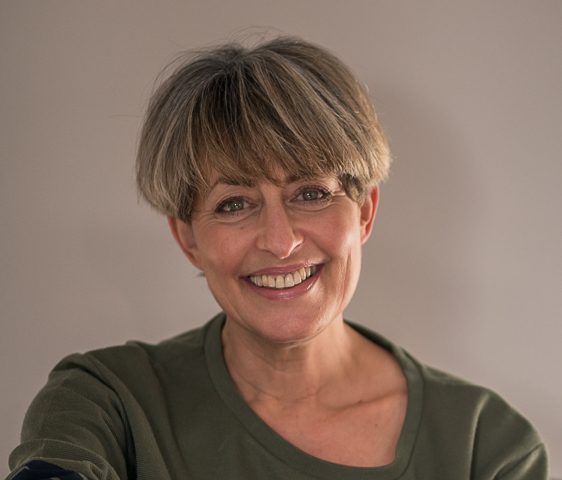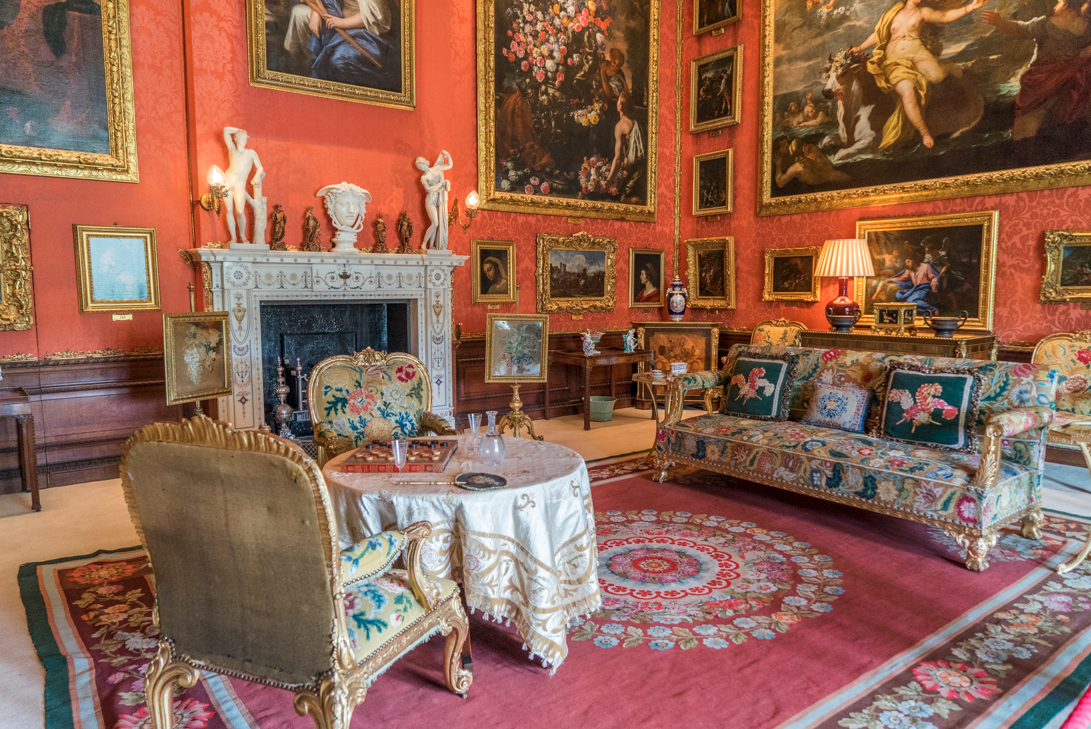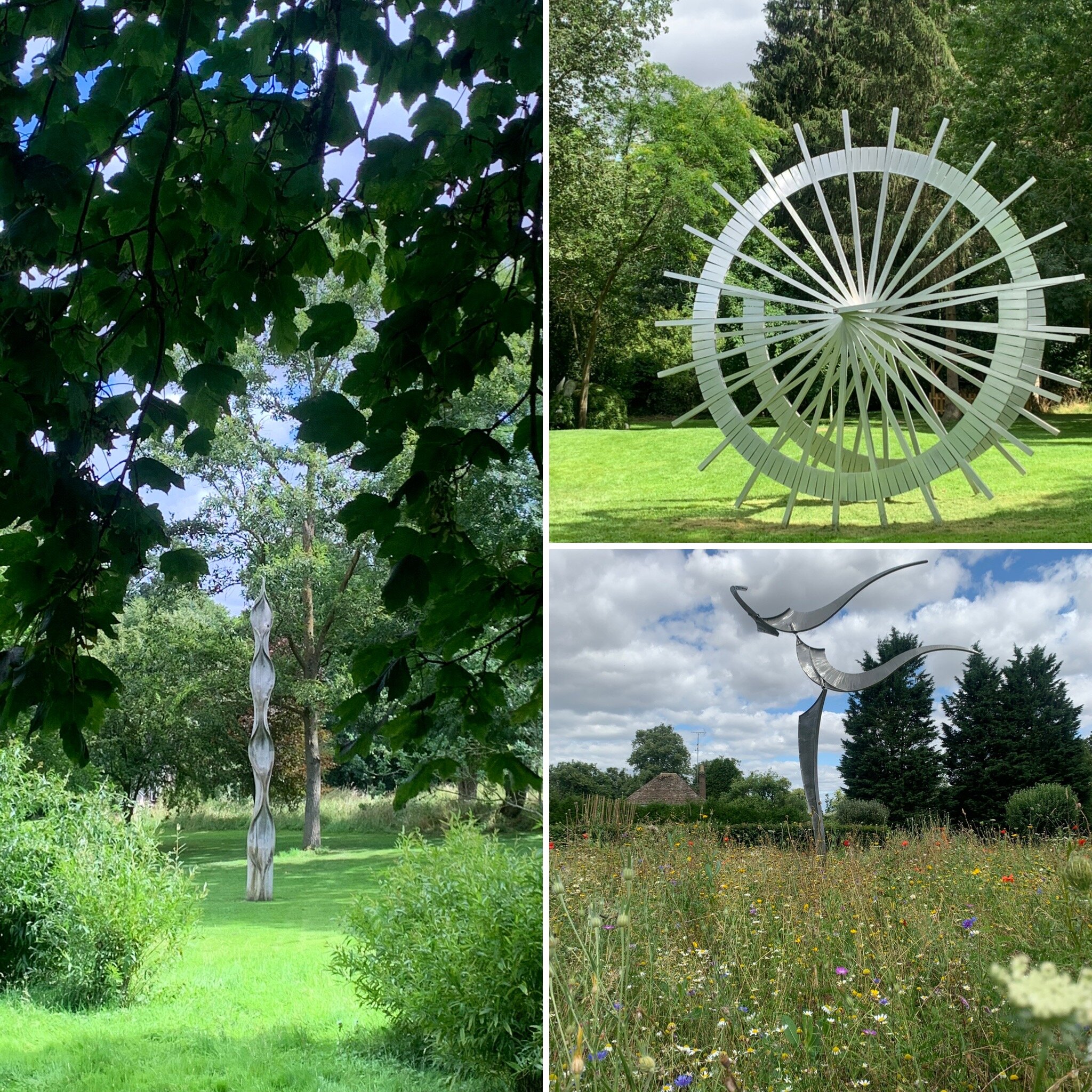Burghley House - a treat at every turn
Do not do what I did and visit Burghley House with only two hours to take in its treasures. Because Burghley is packed with enough delights to fill at least a day, if not more.
My whistle-stop tour of this incredible building - one of the largest surviving 16th century houses in the world - and regretfully speedy walk round part of its magnificent grounds and cleverly designed gardens, left me determined to return as soon as possible to give it the full time and attention it properly deserves.
Burghley was built between 1555 and 1587, by William Cecil, Lord Burghley, the Lord High Treasurer to Queen Elizabeth 1st and although it was, and still is, one of the grandest houses of the Elizabethean age, it has remained a family home to his descendants ever since. (Miranda Rock, the cousin of the current Marquess of Exeter, and her husband and four children are the current occupants and guardians)
Beautiful Burghley House and its magnificent grounds
The main house has 35 major rooms and more than 80 lesser ones, countless corridors, bathrooms and service areas. (The family live in an apartment on the ground floor) The lead covered roof, with it’s exuberant jumble of pillar-like chimneys and gothic spires, is three quarters of an acre in size, and the house sits in over 2000 acres of grounds, designed over a period of 26 years by Capability Brown, which include forests, lakes and gardens.
As impressive and beautiful as Burghley is outside, it’s even more jaw-dropping inside. There are over 400 pieces of art on display and apparently the same number again in storage. And then there are the astonishing painted rooms, walls and ceilings.
The astonishing Bow Room at Burghley House, painted in 1697 by Louis Laguerre
The 5th Earl did more than any other to enrich the Burghley art collection. To say he and his wife were avid collectors would be an understatement. They were passionate lovers of Italian art and their frequent trips to the continent always resulted in vast numbers of purchases. Thanks to them, the collection of Italian Old Masters at Burghley continues to be one of the finest in private hands.
Each one of the state rooms at Burghley is filled with glorious art and artefacts and gorgeous furniture
The house is also home to a world-famous collection of Oriental and European ceramics and a world-leading collection of Chinese snuff bottles.
Then there’s all the gorgeous English and Continental furniture, which includes a number of astonishingly ornate and magnificent beds, which date from c 1660 to 1830.
Three of Burghley’s magnificent historical beds
There is no corner of this huge building that doesn’t reward the visitor with a glorious painting, a beautiful sculpture, a historic artefact, an exquisite piece of some sort, or a tantalising insight into what it was like to live in.
Your entry into the public areas is via the vast kitchen with its soaring, fan-vaulted roof, one of the few Tudor interiors to survive in tact. The fact that it’s miles from the dining room must have made serving the foot hot something of a challenge to say the least.
The kitchen at Burghley is one of the few Tudor rooms to survive in tact
Beyond that is a a small room that was one of my favourites - its walls are covered in call bells which were used to summon the staff to wherever they were required. An updated, electronic version is contained in a large wood-framed panel. Both of them bear witness to the vast size of the house and its bewildering array of rooms and spaces.
Old and new - the original call bells that line three of the walls, and the updated electric panel.
The names of just some of the vast number of rooms and spaces
After the awe-inspiring grandeur of the state rooms, an understated corridor at the end of the house tour reveals a delightfully surprising slice of the Burghley family history. It contains cabinets displaying memorabilia relating to David, Lord Burghley, the 6th Marquess of Exeter, who won a gold medal for the 400 metres hurdles at the Amsterdam Olympic Games in 1928, and a silver in the 4 x 400 metres relay at the 1932 Los Angeles Games.
Medals and memorabilia from the sporting career of the 6th Marquess of Exeter, including his Olympic gold and silver medals and wonderfully old fashioned running shoes
Possibly rather more memorably, he was used as the basis for the character of Lord Andrew Lindsay, played by Nigel Havers, in the Oscar-winning film Chariots of Fire. And although he declared much of the story to be “cobblers”, it is true that he still holds the record for running around Trinity Great Court in Cambridge in the time it took the college clock to strike noon (although he did it solo rather than as a race as depicted in the film).
Back outside the house, the huge grounds are a rewarding mix of formal and manicured, wooded and wild, watery and whimsical. You can take long, leisurely walks in the parkland, which is home to a herd of fallow deer.
Discover the undulating landscape, ancient trees, flower meadows and meandering stream which provide the perfect setting for the changing exhibitions in the Sculpture Garden (open from April to October).
Some of the pieces on display in the Sculpture Garden when I visited
And be sure not to miss the quirky, unexpected and sometimes comical fountains and features of the Garden of Surprises, inspired by the garden built by the first Lord Burghley.
Lots of unexpected delights to discover in the Surprise Garden
See now why two hours isn’t nearly enough to enjoy all the treasures Burghley House has to offer?
The gardens at Burghley are open every day, but the house is only open to the public from Wednesday to Sunday. You need to book tickets for both and you can do that and find out all the information you need to plan your visit on the Burghley website which also features a fantastic virtual tour
Other posts about glorious historic buildings you’ll enjoy














